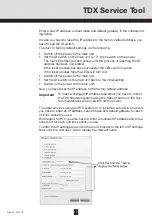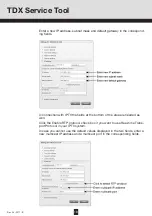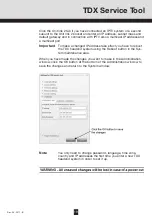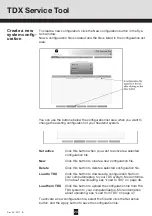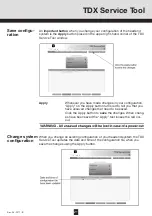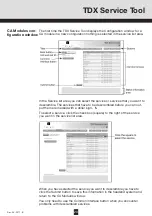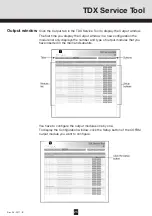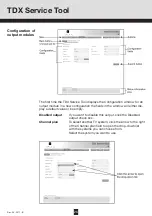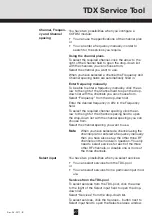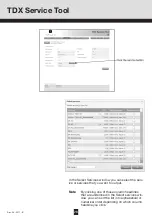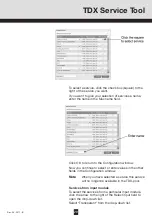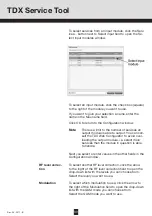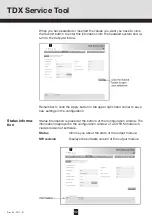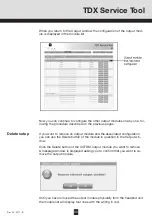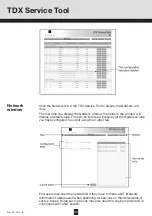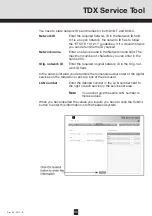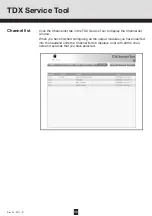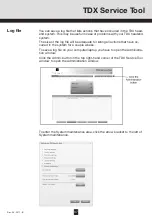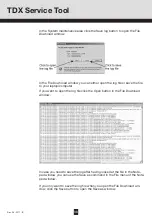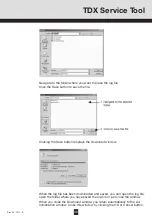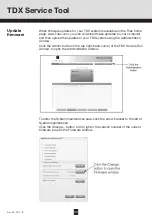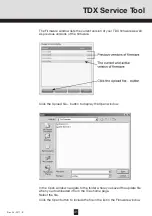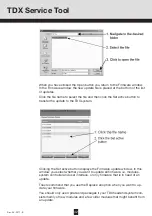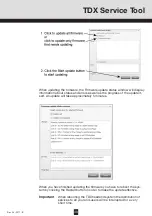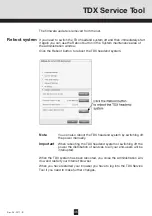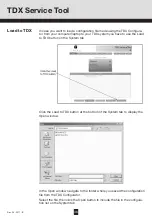
30
Rev. 05 - 2011 - B
To select services from an input module, click the Serv-
ices... button next to Select input field to open the Se-
lect input modules window.
To select an input module, click the check box (square)
to the right of the module you want to use.
If you want to give your selection a name, enter the
name in the Mux name field.
Click OK to return to the Configuration window.
Next you select or enter values in the other fields in the
Configuration window.
RF level correc-
tion
To select another RF level correction, click the arrow
to the lright of the RF level correction field to open the
drop-down list with the levels you can choose from.
Select the level you want to use.
Modulation
To select which modulation to use, click the arrow to
the right of the Modulation field to open the drop-down
list with the QAM mode you can choose from.
Select the QAM mode you want to use.
TDX Service Tool
Note
There is a limit to the number of services an
output module is able to output. You can con-
sult the TDX Web Configurator to avoid over-
loading the output module, i.e. select more
services than the module in question is able
to handle.
31
Rev. 05 - 2011 - B
TDX Service Tool
FEC
To select which FEC rate to use, click the arrow to the
right of the FEC field to open the drop-down list with
the FEC rates you can choose from.
Select the FEC rate you want to use.
Guard interval
To select which guard interval to use, click the arrow to
the right of the Guard interval field to open the drop-
down list with the intervals you can choose from.
Select the guard interval you want to use.
Transmission
mode
To select which transmission mode to use, click the ar-
row to the right of the Transmission mode field to open
the drop-down list with the modes you can choose
from.
Select the transmission mode you want to use.
When you display the Configuration window for an output module
that has been configured, all fields are filled in and services have
been selected.
If you want to change the existing values or services just follow
the same procedure as when you configure an output module for
the very first time.
Note

